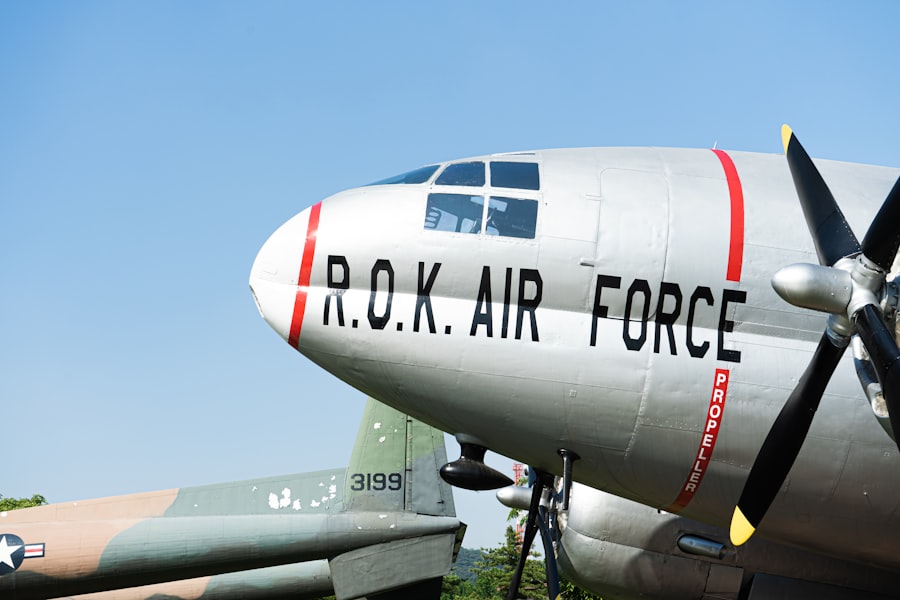
The role of an aircraft rigging assembler is pivotal in the aviation industry, serving as a crucial link in the complex chain of aircraft manufacturing and maintenance. These professionals are responsible for the assembly and installation of various components that ensure the aircraft operates safely and efficiently. The importance of their work cannot be overstated, as they contribute directly to the safety and performance of aircraft, which are subject to rigorous standards and regulations.
As air travel continues to grow globally, the demand for skilled aircraft rigging assemblers is expected to rise, making this an attractive career path for those interested in aviation and engineering. Aircraft rigging assemblers work in a dynamic environment where precision and attention to detail are paramount. They collaborate with engineers, technicians, and other assembly line workers to ensure that every component is installed correctly and functions as intended.
This career not only offers the opportunity to work with cutting-edge technology but also provides a sense of fulfillment, knowing that their efforts contribute to the safety of countless passengers and cargo transported by air. As the aviation industry evolves with advancements in technology and design, the role of aircraft rigging assemblers will continue to adapt, presenting new challenges and opportunities for those entering this field.
Key Takeaways
- Aircraft rigging assemblers play a crucial role in the aviation industry by assembling and installing rigging equipment on aircraft to ensure proper functioning and safety.
- The job responsibilities of aircraft rigging assemblers include interpreting blueprints, assembling rigging components, inspecting and testing equipment, and making necessary adjustments.
- Skills and qualifications required for aircraft rigging assemblers include mechanical aptitude, attention to detail, physical strength, and the ability to work in a team.
- Education and training for aircraft rigging assemblers typically involve a high school diploma or equivalent, on-the-job training, and possibly certification from the Federal Aviation Administration (FAA).
- The job outlook for aircraft rigging assemblers is expected to remain stable, with a median annual salary of around ,000. Advancement opportunities may include supervisory roles or specialization in specific aircraft types.
Job Description and Responsibilities of Aircraft Rigging Assemblers
The primary responsibility of an aircraft rigging assembler is to install and adjust various components of an aircraft’s control systems, including cables, pulleys, and other rigging hardware. This involves interpreting blueprints and technical drawings to understand the specifications for each assembly task. Assemblers must ensure that all components are fitted accurately and securely, as even minor errors can lead to significant safety issues during flight.
They often work with a variety of tools and equipment, including hand tools, power tools, and specialized machinery designed for aircraft assembly. In addition to assembly tasks, aircraft rigging assemblers are also responsible for conducting inspections and tests on the installed systems.
They may use diagnostic equipment to troubleshoot any issues that arise during testing, making adjustments as necessary to ensure compliance with safety standards. Furthermore, assemblers must maintain detailed records of their work, documenting any modifications or repairs made during the assembly process. This meticulous attention to detail is essential for maintaining the integrity of the aircraft and ensuring that it meets regulatory requirements.
Skills and Qualifications Required for Aircraft Rigging Assemblers

To excel as an aircraft rigging assembler, individuals must possess a unique blend of technical skills and personal attributes. A strong understanding of mechanical systems is crucial, as assemblers must be able to comprehend complex engineering concepts and apply them in practical settings. Proficiency in reading blueprints and technical drawings is also essential, as these documents provide the necessary guidance for assembly tasks.
Additionally, familiarity with various hand tools and power tools used in the assembly process is vital for efficiency and safety. Beyond technical skills, successful aircraft rigging assemblers must demonstrate strong problem-solving abilities and attention to detail. The ability to identify potential issues before they escalate is critical in this role, as it directly impacts the safety and performance of the aircraft.
Effective communication skills are also important, as assemblers often work as part of a team and must coordinate their efforts with other professionals in the manufacturing process. Finally, a commitment to ongoing learning is essential in this rapidly evolving field, as new technologies and techniques continue to emerge.
Education and Training for Aircraft Rigging Assemblers
| Education Level | Percentage of Assemblers |
|---|---|
| High School Diploma or Equivalent | 60% |
| Post-Secondary Certificate | 25% |
| Associate’s Degree | 10% |
| Bachelor’s Degree | 5% |
While a high school diploma may be sufficient for entry-level positions in aircraft rigging assembly, many employers prefer candidates who have completed post-secondary education or specialized training programs. Technical schools and community colleges offer programs in aviation maintenance technology or aerospace engineering technology that provide students with foundational knowledge in aircraft systems and assembly techniques. These programs often include hands-on training that allows students to gain practical experience working with aircraft components.
In addition to formal education, on-the-job training is a critical component of becoming an effective aircraft rigging assembler. New hires typically work under the supervision of experienced assemblers or technicians who provide guidance on specific tasks and safety protocols. This mentorship allows newcomers to develop their skills in a real-world environment while gaining insights into industry best practices.
Furthermore, obtaining certifications from recognized organizations such as the Federal Aviation Administration (FAA) can enhance an assembler’s qualifications and improve job prospects.
Job Outlook and Salary for Aircraft Rigging Assemblers
The job outlook for aircraft rigging assemblers appears promising, driven by the ongoing growth of the aviation industry. According to the U.S.
This growth is attributed to an increase in air travel demand, necessitating more aircraft maintenance and assembly work. As airlines expand their fleets and new models are introduced into service, the need for skilled assemblers will continue to rise. In terms of compensation, salaries for aircraft rigging assemblers can vary based on factors such as experience, location, and employer type.
As of May 2022, the median annual wage for aircraft and avionics equipment mechanics was reported at around $66,000 by the BLS. Entry-level positions may start at lower salaries, while experienced assemblers can earn significantly more, especially if they take on supervisory roles or specialize in advanced systems. Additionally, benefits such as health insurance, retirement plans, and paid time off are often included in employment packages within this field.
Advancement Opportunities for Aircraft Rigging Assemblers

Career Advancement Opportunities for Aircraft Rigging Assemblers
Aircraft rigging assemblers have numerous opportunities for career advancement, provided they demonstrate exceptional skill and dedication in their roles.
Specialized Positions in the Aviation Industry
With experience, assemblers may progress to more specialized positions within the aviation industry, such as lead assembler or supervisor roles where they oversee teams of assemblers and ensure quality control throughout the assembly process. These positions often come with increased responsibilities and higher salaries.
Advanced Roles in Engineering and Management
Assemblers who pursue further education or certifications can open doors to advanced roles in engineering or management within aerospace companies. Some may choose to transition into related fields such as quality assurance or project management, where their technical background provides valuable insights into production processes.
Continuous Professional Development
Continuous professional development through workshops or industry conferences can also enhance an assembler’s knowledge base and networking opportunities, further facilitating career growth.
Work Environment for Aircraft Rigging Assemblers
Aircraft rigging assemblers typically work in manufacturing facilities or maintenance hangars where they have access to specialized equipment and tools necessary for their tasks. The work environment can be fast-paced and requires adherence to strict safety protocols due to the nature of working with heavy machinery and complex systems. Assemblers often collaborate closely with engineers, technicians, and other assembly line workers, fostering a team-oriented atmosphere that emphasizes communication and cooperation.
The physical demands of the job can vary; assemblers may spend long hours standing or working in awkward positions while assembling components at various heights. Safety gear such as helmets, gloves, and protective eyewear is commonly required to mitigate risks associated with working in industrial settings. Additionally, due to the critical nature of their work, assemblers must maintain a high level of focus and concentration to ensure that every task is completed accurately.
How to Pursue a Career as an Aircraft Rigging Assembler in the USA
For individuals interested in pursuing a career as an aircraft rigging assembler in the United States, several steps can be taken to enhance their prospects in this competitive field. First, obtaining a high school diploma or equivalent is essential; courses in mathematics, physics, and technical drawing can provide a solid foundation for future studies. Following high school, enrolling in a technical school or community college program focused on aviation maintenance or aerospace technology can significantly improve job readiness.
Gaining hands-on experience through internships or apprenticeships is another valuable step toward becoming an aircraft rigging assembler. Many employers seek candidates who have practical experience working with aircraft systems or components. Networking within the aviation industry can also be beneficial; attending job fairs or industry events allows aspiring assemblers to connect with potential employers and learn about job openings.
Finally, pursuing relevant certifications from organizations like the FAA can further enhance an individual’s qualifications and demonstrate a commitment to professional development within this vital sector of the aviation industry.
If you are interested in learning more about careers in the USA, specifically in the field of aircraft rigging assembly, you may want to check out the article “Top 10 Highest Paying Jobs in the USA” on Careers in the USA. This article provides valuable information on various high-paying career options in the country, including insights into the aviation industry and the potential for growth in this field. It is a great resource for individuals looking to explore different career paths and make informed decisions about their future.
FAQs
What does an aircraft rigging assembler do?
An aircraft rigging assembler is responsible for assembling and installing rigging equipment on aircraft, such as cables, pulleys, and control mechanisms.
What are the educational requirements for a career as an aircraft rigging assembler?
Most aircraft rigging assemblers have a high school diploma or equivalent. Some employers may also require additional technical training or certification in aircraft assembly.
What skills are important for a career as an aircraft rigging assembler?
Important skills for aircraft rigging assemblers include attention to detail, mechanical aptitude, problem-solving abilities, and the ability to work with precision tools and equipment.
What are the job prospects for aircraft rigging assemblers in the USA?
Job prospects for aircraft rigging assemblers are expected to be stable in the coming years, with opportunities available in aerospace manufacturing and maintenance facilities.
What is the average salary for aircraft rigging assemblers in the USA?
The average salary for aircraft rigging assemblers in the USA is around $40,000 per year, but this can vary based on experience, location, and employer.



